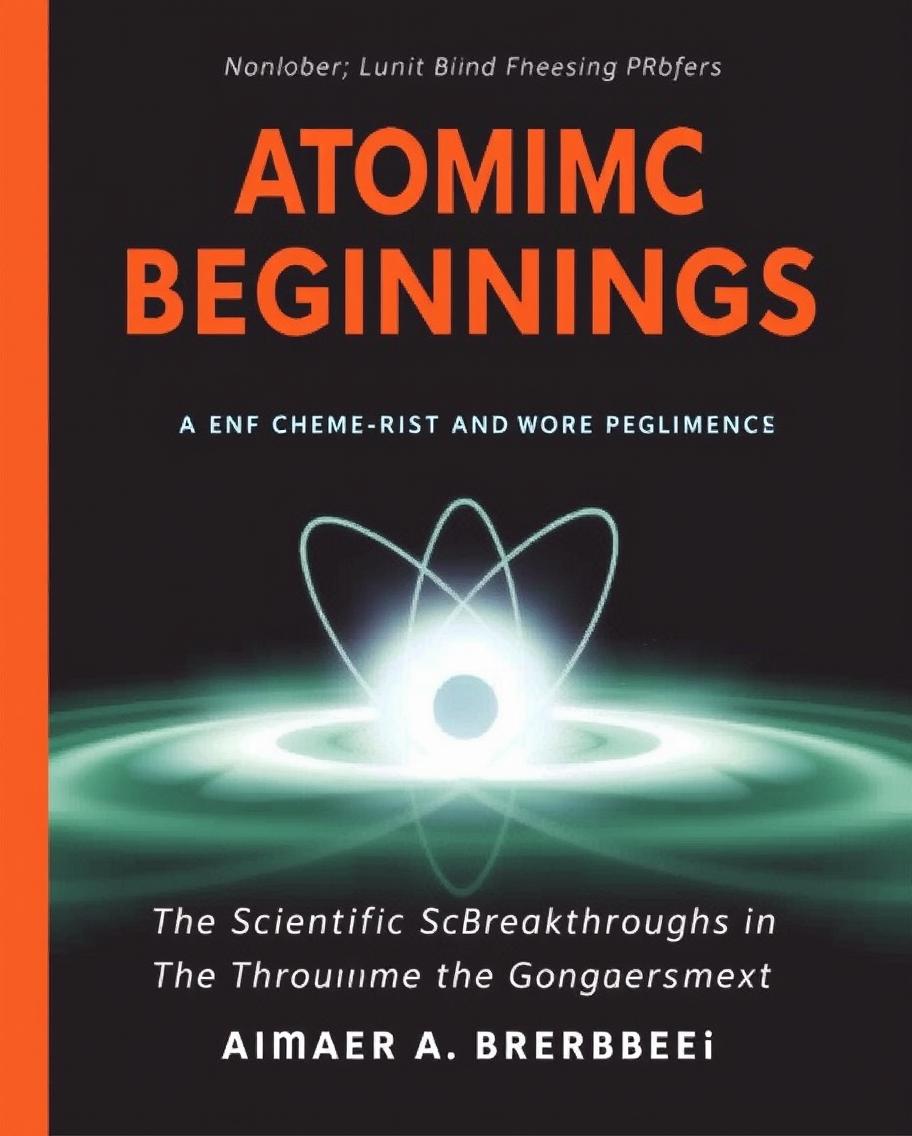The Dawn of Nuclear Energy: The Physics, Challenges, and Ethical Questions Atomic Beginnings: The Scientific Breakthroughs That Changed the World Forever
The Dawn of the Atomic Age: Oppenheimer, Nuclear Energy, and the Science Behind the Bomb
Introduction
The advent of nuclear energy marked a pivotal moment in human history, culminating in the creation of the atomic bomb. The driving force behind this development was J. Robert Oppenheimer, a physicist whose work led to the successful detonation of the first nuclear bomb during World War II. The science behind nuclear energy, rooted in the understanding of atomic and subatomic particles, has shaped the course of modern physics and technology. This blog post delves into the scientific principles behind nuclear energy, the process of creating a nuclear bomb, and the philosophical reflections of Oppenheimer as he quoted the Bhagavad Gita upon witnessing the destructive power of the bomb.
The Birth of Nuclear Energy: A Scientific Revolution
Nuclear energy arises from the interactions within an atom’s nucleus, where immense forces hold protons and neutrons together. The idea that energy could be released from atomic nuclei was first suggested by Albert Einstein’s famous equation E=mc2E=mc^2E=mc2, which indicated that a small amount of mass could be converted into a large amount of energy. This principle laid the foundation for the development of nuclear power and atomic weapons.
Key Scientific Discoveries
- Discovery of the Atom and Subatomic Particles:
- The concept of the atom as the smallest unit of matter dates back to ancient Greece, but it was not until the early 20th century that scientists like J.J. Thomson, Ernest Rutherford, and Niels Bohr began to uncover the complex structure of the atom. Rutherford’s gold foil experiment in 1909 revealed the existence of a dense nucleus at the center of the atom, surrounded by a cloud of electrons.
- Nuclear Fission:
- The process of nuclear fission, where the nucleus of an atom splits into smaller parts, was discovered by Otto Hahn and Fritz Strassmann in 1938, and further explained by Lise Meitner and Otto Frisch. They observed that when a uranium nucleus was bombarded with neutrons, it split into lighter elements, releasing a tremendous amount of energy. This discovery was the key to unlocking the potential for nuclear energy and weapons.
- Chain Reaction:
- Enrico Fermi and Leo Szilard developed the concept of a nuclear chain reaction, where neutrons released during fission could trigger further fission reactions, leading to an exponential release of energy. This principle is what powers both nuclear reactors and atomic bombs.
The Manhattan Project: Oppenheimer and the Birth of the Bomb
The practical application of these scientific principles began with the Manhattan Project, a secret U.S. government initiative during World War II to develop nuclear weapons. J. Robert Oppenheimer was appointed as the scientific director of the project, overseeing the collaboration of the world’s leading physicists.
- Development of the Bomb:
- The primary challenge was to create a controlled chain reaction that would result in an explosive release of energy. Two types of atomic bombs were developed: one using uranium-235 (the “Little Boy” bomb dropped on Hiroshima) and the other using plutonium-239 (the “Fat Man” bomb dropped on Nagasaki). These bombs worked by rapidly assembling a supercritical mass of fissile material, initiating an uncontrolled chain reaction that released enormous energy in the form of an explosion.
- The Trinity Test:
- On July 16, 1945, the first successful test of an atomic bomb, codenamed “Trinity,” was conducted in the New Mexico desert. Oppenheimer and his team witnessed the terrifying power of nuclear energy unleashed. The explosion created a blinding flash of light, a massive fireball, and a mushroom cloud that rose miles into the sky.
The Mind of Oppenheimer: Science, Philosophy, and the Bhagavad Gita
As Oppenheimer watched the Trinity test, he famously recalled a verse from the Bhagavad Gita: “Now I am become Death, the Destroyer of Worlds.” This quote reflects the profound ethical and philosophical questions that the creation of the atomic bomb raised. The Bhagavad Gita, a sacred Hindu text, is a dialogue between the prince Arjuna and the god Krishna, in which Krishna imparts spiritual wisdom and guidance.
- Philosophical Reflections:
- Oppenheimer’s quote from the Bhagavad Gita highlights the duality of his feelings—pride in scientific achievement and dread at the destructive potential of the bomb. The verse he quoted speaks to the inevitability of action and the weight of responsibility, themes that resonated deeply with Oppenheimer as he grappled with the implications of his work.
- The Ethical Dilemma:
- The use of atomic bombs on Hiroshima and Nagasaki brought about unprecedented devastation, leading to the end of World War II but also raising ethical questions about the use of such weapons. Oppenheimer, and many of his colleagues, were haunted by the moral consequences of their creation. His reflections on the Bhagavad Gita underscore the internal conflict between the pursuit of knowledge and the burden of its potential for destruction.
The Science and Applications of Nuclear Energy
Beyond its military applications, nuclear energy has also been harnessed for peaceful purposes. Nuclear reactors generate electricity by using controlled fission reactions to produce heat, which drives turbines to generate power. The scientific principles behind nuclear power are the same as those used in bombs, but the reactions are carefully managed to prevent uncontrolled explosions.
- Nuclear Power:
- Nuclear reactors use uranium or plutonium as fuel. When the nuclei of these atoms are split, they release energy in the form of heat. This heat is used to produce steam, which drives turbines connected to generators. Nuclear power plants provide a significant portion of the world’s electricity, offering a low-carbon alternative to fossil fuels.
- Medical Applications:
- Nuclear technology also has important applications in medicine, such as in cancer treatment through radiation therapy and in diagnostic imaging techniques like PET scans.
The Legacy of Nuclear Science
The discovery of nuclear energy and the development of atomic weapons have profoundly shaped the modern world. The potential for both creation and destruction inherent in nuclear technology has led to ongoing debates about its use and regulation.
- The Cold War and Nuclear Deterrence:
- The development of nuclear weapons led to an arms race during the Cold War, with the United States and the Soviet Union amassing large arsenals. The concept of “mutually assured destruction” (MAD) emerged, where the threat of total annihilation was seen as a deterrent against the use of nuclear weapons.
- Nuclear Non-Proliferation:
- Efforts to prevent the spread of nuclear weapons have led to international treaties like the Non-Proliferation Treaty (NPT), which seeks to limit the number of nuclear-armed states and promote disarmament.
- Ongoing Challenges:
- The legacy of nuclear science continues to present challenges, from managing nuclear waste to preventing the proliferation of nuclear weapons. The dual-use nature of nuclear technology—its ability to be used for both peaceful and destructive purposes—requires careful stewardship and ethical consideration.
The Historical Context of Nuclear Energy Development
The Prelude to Nuclear Discoveries:
- Early Theoretical Foundations:
- Long before the development of nuclear energy, scientists were intrigued by the nature of matter and the forces that hold it together. Theories about the atom date back to ancient Greek philosophers like Democritus, who speculated that matter was composed of indivisible particles called “atomos.” Fast forward to the 19th century, when John Dalton’s atomic theory provided a systematic framework for understanding chemical reactions as the rearrangement of atoms, setting the stage for later discoveries.
- Radioactivity and Its Discoverers:
- The discovery of radioactivity in the late 19th century by Henri Becquerel, and later studied by Marie and Pierre Curie, was pivotal in advancing nuclear science. The Curies’ work on radium and polonium revealed that certain elements spontaneously emit energy in the form of radiation, a phenomenon later understood as the decay of unstable atomic nuclei. These findings challenged existing notions of atomic stability and hinted at the vast energy contained within the atom.
- Quantum Mechanics and Atomic Structure:
- The development of quantum mechanics in the early 20th century further revolutionized our understanding of atomic structure. Scientists like Max Planck, Niels Bohr, and Werner Heisenberg introduced concepts such as quantized energy levels and wave-particle duality, which provided a deeper understanding of atomic and subatomic behavior. Bohr’s model of the atom, in particular, illustrated how electrons occupy specific energy levels around the nucleus, influencing the atom’s stability and reactivity.
The Technical Challenges of Creating the Bomb
Refining the Process:
- Isotope Separation:
- One of the major technical challenges in building an atomic bomb was the separation of uranium-235 from the more abundant uranium-238. Uranium-235 is the isotope capable of sustaining a chain reaction, but it comprises less than 1% of natural uranium. Scientists employed various methods for isotope separation, including gaseous diffusion, electromagnetic separation, and gas centrifugation. These processes were complex and resource-intensive, requiring the construction of massive facilities like the ones at Oak Ridge, Tennessee.
- Plutonium Production:
- While uranium-235 was the primary fissile material in the first atomic bombs, scientists also focused on producing plutonium-239, which could be generated in nuclear reactors by irradiating uranium-238 with neutrons. The production of plutonium presented its own set of challenges, including the need to chemically separate the plutonium from the irradiated uranium fuel. This work was carried out at the Hanford Site in Washington State, where large-scale reactors were built specifically for plutonium production.
- Weaponization and Bomb Design:
- Designing a bomb that could effectively deliver a nuclear explosion required solving numerous engineering problems. The “Little Boy” bomb used a gun-type design, where two sub-critical masses of uranium-235 were brought together by conventional explosives to form a supercritical mass. The “Fat Man” bomb, on the other hand, used an implosion design, where a sphere of plutonium-239 was compressed by a surrounding layer of high explosives to achieve criticality. The implosion method was particularly complex, requiring precise timing and symmetry to work correctly.
Oppenheimer’s Leadership and Intellectual Influence
The Scientific Community’s Role:
- Oppenheimer’s Vision and Leadership:
- J. Robert Oppenheimer was not only a brilliant physicist but also an exceptional leader who was able to bring together diverse scientific talents to work towards a common goal. His deep understanding of both theoretical physics and practical engineering made him the ideal leader of the Manhattan Project. Oppenheimer’s ability to inspire and motivate his team, while also navigating the immense pressure and ethical dilemmas of the project, was crucial to its success.
- Collaboration and Innovation:
- The Manhattan Project was a massive collaborative effort involving thousands of scientists, engineers, and military personnel. Researchers from various disciplines—physics, chemistry, engineering, and materials science—worked together to solve the myriad challenges of creating a functional nuclear weapon. This interdisciplinary approach led to numerous innovations, including new materials, manufacturing processes, and computational techniques that would have far-reaching impacts beyond the project itself.
- Ethical Debates Among Scientists:
- While Oppenheimer and his colleagues were focused on the technical aspects of the bomb, many were also deeply concerned about the moral implications of their work. The decision to use the bomb against Japan was the subject of intense debate among the scientists. Some, like Leo Szilard, advocated for a demonstration of the bomb’s power on an uninhabited area as a warning, rather than using it on a populated city. Others believed that the bomb was necessary to bring a swift end to the war. These ethical discussions continue to resonate in debates about the use of nuclear weapons and technology.
The Physics of Nuclear Explosions
Understanding the Explosive Power:
- Critical Mass and Supercriticality:
- The concept of critical mass is central to the functioning of a nuclear bomb. Critical mass refers to the minimum amount of fissile material needed to sustain a nuclear chain reaction. When fissile material is brought together in sufficient quantity and density, it reaches a supercritical state, where each fission event produces more than one neutron that can cause further fission, leading to an exponentially growing reaction. In a bomb, this process occurs in microseconds, resulting in an explosive release of energy.
- The Role of Neutrons:
- Neutrons play a crucial role in both sustaining the chain reaction and determining the efficiency of the bomb. In the moments leading up to the explosion, a burst of neutrons is released, some of which are absorbed by the fissile material, while others escape. The design of the bomb must maximize the number of neutrons that contribute to the chain reaction while minimizing those that escape, ensuring that the reaction proceeds rapidly and violently.
- Thermodynamics of the Explosion:
- The energy released in a nuclear explosion is primarily in the form of kinetic energy of the fission fragments, which are propelled at extremely high speeds. This energy is rapidly converted into heat, producing temperatures of millions of degrees Celsius. The intense heat generates a fireball, vaporizing everything in its vicinity and creating a shockwave that causes massive destruction. The explosion also releases a burst of radiation, including gamma rays and neutrons, which contribute to the bomb’s lethal effects.
The Philosophical and Ethical Legacy of the Atomic Bomb
Oppenheimer and the Bhagavad Gita:
- The Meaning of “I Am Become Death”:
- The Role of the Bhagavad Gita in Oppenheimer’s Life:
- Oppenheimer was deeply influenced by Eastern philosophy, particularly the Bhagavad Gita, which he studied extensively during his life. The text’s exploration of duty, morality, and the nature of the universe resonated with him, especially as he confronted the moral implications of his work on the bomb. The Gita’s teachings on detachment and the inevitability of action may have offered Oppenheimer a way to reconcile his role in the creation of a weapon of mass destruction.
- The Ethical Dilemmas of Scientific Advancement:
- The creation of the atomic bomb raised fundamental ethical questions about the role of scientists in society and the consequences of technological progress. The bomb’s development demonstrated that scientific knowledge could be used for both good and evil, and that scientists have a responsibility to consider the broader implications of their work. The ethical dilemmas faced by Oppenheimer and his colleagues continue to be relevant today, as we grapple with the potential risks and benefits of emerging technologies like artificial intelligence, biotechnology, and climate engineering.
The Observation and Discovery of Nuclear Phenomena in the Universe
Unveiling the Cosmic Forces:
- Natural Occurrences of Nuclear Reactions:
- Nuclear reactions are not limited to human-made devices; they occur naturally throughout the universe. The most common example is the process of nuclear fusion in stars, including our sun, where hydrogen nuclei fuse to form helium, releasing vast amounts of energy. This process powers the stars and is responsible for the light and heat that sustains life on Earth. Understanding these natural nuclear processes helped scientists conceptualize how similar reactions could be replicated and controlled on Earth.
- Cosmic Ray Interactions:
- Cosmic rays, high-energy particles from outer space, constantly bombard the Earth and interact with the atmosphere, causing nuclear reactions that produce secondary particles. The study of cosmic rays and their interactions with matter provided early insights into the behavior of subatomic particles and the forces governing nuclear reactions. These observations were crucial in the development of nuclear physics and the understanding of particle interactions.
- Discovery of Neutrinos:
- Neutrinos, elusive subatomic particles produced in nuclear reactions, were first postulated by Wolfgang Pauli in 1930 to explain the apparent loss of energy in beta decay. The discovery of neutrinos provided further evidence of the complex interactions within the nucleus and helped scientists develop more accurate models of nuclear processes. Neutrinos are now studied in astrophysics, where they provide information about processes occurring in distant stars and supernovae.
Applications and Impact of Nuclear Technology Beyond Weaponry
Civilian and Medical Uses:
- Nuclear Power Generation:
- One of the most significant peaceful applications of nuclear technology is the generation of electricity. Nuclear power plants use controlled fission reactions to produce heat, which is then used to generate steam that drives turbines to produce electricity. Nuclear power provides a substantial portion of the world’s energy and is seen as a low-carbon alternative to fossil fuels, although it comes with challenges related to safety, waste disposal, and proliferation risks.
- Medical Imaging and Radiotherapy:
- Nuclear technology has revolutionized medicine, particularly in the fields of imaging and cancer treatment. Techniques like positron emission tomography (PET) and single-photon emission computed tomography (SPECT) use radioactive tracers to create detailed images of the body, aiding in the diagnosis of various conditions. Radiotherapy, which uses targeted radiation to destroy cancer cells, has become a cornerstone of cancer treatment, improving survival rates and reducing suffering.
- Agriculture and Food Safety:
- Nuclear technology has also found applications in agriculture and food safety. Radiation is used to sterilize food and eliminate pathogens, extending shelf life and reducing the risk of foodborne illnesses. In agriculture, radiation-induced mutations have been used to develop new crop varieties with improved yield, disease resistance, and nutritional content. These applications highlight the diverse and beneficial uses of nuclear technology beyond its military origins.
The Legacy of the Manhattan Project and Its Impact on Modern Science
Long-term Consequences and Reflections:
- Birth of Big Science:
- The Manhattan Project marked the beginning of “Big Science,” where large-scale, government-funded research initiatives became the norm. The project’s success demonstrated the power of mobilizing vast resources, infrastructure, and expertise to tackle complex scientific challenges. This model of research has continued in various fields, including space exploration, genomics, and particle physics, leading to groundbreaking discoveries and technological advancements.
- Scientific Collaboration and International Relations:
- The international collaboration during the Manhattan Project set a precedent for future scientific endeavors, fostering cooperation across borders. In the post-war era, this spirit of collaboration continued with the establishment of organizations like the International Atomic Energy Agency (IAEA) and CERN, where scientists from around the world work together to advance knowledge and address global challenges. These collaborations have played a crucial role in maintaining scientific progress and promoting peace.
- Nuclear Non-Proliferation and Arms Control:
- The development and use of nuclear weapons during World War II led to a global movement for nuclear non-proliferation and arms control. Treaties like the Nuclear Non-Proliferation Treaty (NPT) and various arms reduction agreements have sought to prevent the spread of nuclear weapons and reduce the risks of nuclear war. These efforts have been driven by the recognition of the catastrophic potential of nuclear weapons and the need to prevent their use in future conflicts.
Conclusion
The story of J. Robert Oppenheimer and the development of nuclear energy is a tale of scientific triumph and ethical complexity. The science behind nuclear energy, rooted in the fundamental properties of atoms and subatomic particles, has the power to both sustain and destroy life on Earth. Oppenheimer’s reflection on the Bhagavad Gita captures the profound responsibility that comes with such knowledge, reminding us that the pursuit of science must always be tempered with a consideration of its impact on humanity and the world.
As we continue to harness the power of the atom, the lessons of the past serve as a guiding light, urging us to use this incredible force wisely and with a deep respect for its potential consequences.







